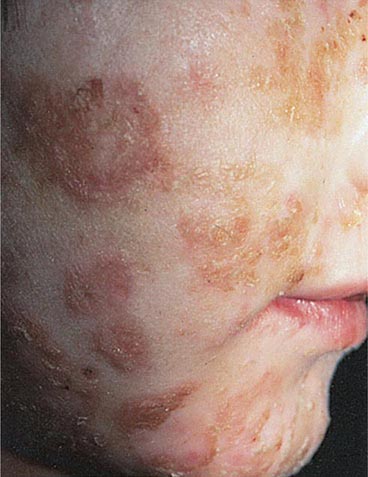Complicated skin infections represent a significant clinical challenge, particularly when they involve pathogens such as Enterococcus faecalis. Understanding the intricacies of skin structure and the role of this bacteria in infection is crucial for effective diagnosis and treatment. In this article, we delve into the anatomy of the skin, how Enterococcus faecalis contributes to infections, and the current approaches to managing these conditions.

Understanding Skin Structure and Its Role in Infection
The skin serves as the body’s first line of defense against environmental threats, including pathogens. It is a highly complex organ composed of multiple layers, each with specific functions that contribute to skin health and protection.
The Epidermis: The Protective Barrier
The outermost layer of the skin, known as the epidermis, plays a critical role in preventing harmful bacteria from entering the body. Composed primarily of keratinocytes, the epidermis acts as a shield, offering both mechanical and chemical protection. The skin’s pH, typically acidic, further supports its role in protecting against bacterial colonization.
The Dermis: The Supportive Structure
Beneath the epidermis lies the dermis, which contains connective tissue, blood vessels, nerve endings, and hair follicles. This layer supports the skin’s structure, providing elasticity and strength. It also contains immune cells such as macrophages and neutrophils, which help in detecting and fighting infections.
The Hypodermis: The Deepest Layer
The hypodermis, or subcutaneous layer, consists mainly of fat and connective tissue. This layer acts as an insulator, protecting the body from temperature extremes and trauma. It also stores energy and houses larger blood vessels and nerves.
These layers, working in concert, provide a formidable barrier against most microbial threats. However, when this barrier is breached—due to trauma, surgery, or other factors—pathogens like Enterococcus faecalis can enter the skin and cause infections.
Enterococcus faecalis: A Common Culprit in Skin Infections
Enterococcus faecalis is a gram-positive bacterium commonly found in the gastrointestinal tract and often in the skin microbiome. While it is typically harmless, it can become pathogenic under certain conditions, especially when the skin’s protective barrier is compromised.
Role in Skin Infections
Once Enterococcus faecalis breaches the skin’s defenses, it can lead to a variety of infections, particularly in patients with weakened immune systems or those who have suffered traumatic wounds. These infections can manifest in a range of ways, from mild cellulitis to more severe, deep-seated abscesses. In some cases, the bacterium may also contribute to chronic skin conditions, complicating recovery.
Risk Factors for Enterococcus faecalis Infections
Several factors increase the risk of Enterococcus faecalis infections, including:
- Chronic medical conditions such as diabetes, which impair wound healing.
- Immunocompromised states due to conditions like cancer or the use of immunosuppressive drugs.
- Invasive medical procedures, including surgery or catheterization, which increase the likelihood of bacterial entry.
- Poor hygiene or inadequate wound care, providing an entry point for bacteria.
Diagnosis of Enterococcus faecalis Infections in Skin
Accurate diagnosis is critical for managing Enterococcus faecalis infections. The following diagnostic steps are typically employed:
Clinical Examination
A thorough physical examination helps to assess the severity of the infection. Symptoms such as redness, swelling, warmth, and pain at the site of infection are often the first indicators of a bacterial problem.
Microbiological Testing
Culturing samples from the infection site remains the gold standard for confirming Enterococcus faecalis as the causative agent. This can involve swabbing the wound or aspirating fluid from an abscess for laboratory analysis. Blood cultures may also be indicated in more severe or systemic cases.
Imaging
In more complicated cases, imaging techniques like ultrasound or MRI may be necessary to assess the depth of the infection or identify abscesses that require drainage.
Treatment Options for Enterococcus faecalis Skin Infections
Managing Enterococcus faecalis infections requires a multifaceted approach, depending on the severity and location of the infection. The following treatments are commonly employed:
Antibiotic Therapy
Enterococcus faecalis is often resistant to many antibiotics, making treatment a challenge. The most effective treatment typically includes:
- Beta-lactams: Penicillin and ampicillin are first-line treatments, though resistance can develop.
- Vancomycin: This is used for more severe cases, especially in hospitalized patients.
- Linezolid: Another option for drug-resistant strains.
Combination therapy may also be used in some cases to increase efficacy.
Wound Care and Drainage
Proper wound care is crucial in preventing the spread of infection. For abscesses, surgical drainage is often necessary to remove infected material and promote healing.
Supportive Care
For severe infections, especially in immunocompromised individuals, supportive care such as fluid management and nutritional support may be necessary to help the body fight the infection.
Prevention of Enterococcus faecalis Infections
Preventing Enterococcus faecalis infections is vital, particularly in at-risk populations. The following strategies can help reduce the risk:
Hygiene Practices
Maintaining proper hygiene, especially in healthcare settings, is one of the most effective ways to prevent skin infections. Regular hand washing, sterilization of medical equipment, and proper wound care can significantly reduce the risk of bacterial entry.
Early Intervention
Prompt treatment of any skin injury or wound can help prevent bacterial infections from taking root. Early use of antibiotics, when appropriate, can reduce the likelihood of an infection developing.
Complications and Long-term Impact of Enterococcus faecalis Infections
If left untreated, Enterococcus faecalis infections can lead to serious complications, including:
- Sepsis, where the infection spreads to the bloodstream, causing widespread inflammation and organ failure.
- Chronic wounds, which may require long-term medical intervention and may impact quality of life.
- Tissue necrosis, where the infection causes the death of surrounding tissue, necessitating more extensive surgical intervention.
Managing Chronic Infections
Some individuals may experience recurrent or chronic Enterococcus faecalis infections, especially those with underlying health conditions. Long-term antibiotic regimens, combined with meticulous wound care, are often required to manage these infections effectively complicated skin and skin structure enterococcus faecalis infection.